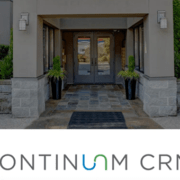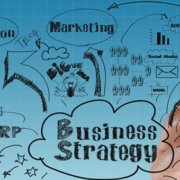7 Reasons Why We Love HubSpot for Senior Living
We think HubSpot for senior living is the bees knees. And no, we’re not saying that because we’re a HubSpot Solutions Partner. We became fans of HubSpot long before we entered their Partners Program, and the main reason is simple. (Cue Tina Turner, please.) HubSpot is simply the best. Better than all the rest! Here are seven reasons why.
1. HubSpot remains the leader in inbound marketing.
While there are many inbound marketing pioneers to thank, from Seth Godin to Meerman Scott, the founders of HubSpot are the ones who made the concept stick. Today, businesses around the globe embrace the inbound methodology. And even though many competitors have popped up, HubSpot remains the leader.
2. HubSpot believes in continuous innovation — and practices what it preaches.
One of the reasons HubSpot holds onto its leadership position is because it refuses to rest on its laurels. (Doing so is the fastest route to obsolescence.) Since its founding, HubSpot has constantly innovated and reimagined the marketing software that made it famous.
From developing a CRM that can hold its own against all the big guys (like Salesforce) to developing marketing automation that’s equal parts robust and intuitive, HubSpot continuously impresses.
Best of all? It listens to its customers and community. HubSpot bases updates and product improvements on community feedback.
3. HubSpot for senior living is more than just marketing automation software.
When we talk up HubSpot for senior living with our clients, we often lead with marketing automation, since that’s the foundation upon which effective inbound marketing is built.
But HubSpot offers senior living marketers and sales reps so much more: an excellent CRM (or the ability to integrate with popular CRM brands), powerful analytics, and easy-to-use content management tools (just to name a few impressive product features).
Different levels of HubSpot make it easy to find the right package for your community’s size and its goals. And if you’re not sure which level is right for you, don’t worry: HubSpot works with partners (like us!) who can help. Which brings us to our next point.
4. HubSpot values partnership.
HubSpot values creating strong relationships with its customers and its formal partners (like us). HubSpot’s Solutions Partner Program enables us to deliver the best experience to our clients. So when you choose us and HubSpot, you get the support and backing of the entire HubSpot ecosystem. (Read more about the platinum tier that we achieved in 2021.)
5. HubSpot practices what it preaches and makes it easy to learn how to do inbound marketing right.
Visit the HubSpot website, download a piece of content, follow HubSpot on social media, and/or interact with HubSpot sales folks, and you’ll quickly get a lesson in effective inbound marketing tactics.
And when you need a tutorial for how to do something within HubSpot, you don’t need to look any further than HubSpot itself. It has an impressive HubSpot Academy where you can earn accreditations that’ll transform you into an inbound marketing rockstar. (And many of the certifications are free and clear, meaning you don’t even have to be a paying customer.)
6. HubSpot has great reviews and stacks up well against popular competitors.
Don’t take our word for it; read independent reviews on meaningful places like Capterra and G2. Capterra breaks down reviews on different HubSpot products (for example, CRM, CMS, HubSpot Sales), but that doesn’t make a difference: HubSpot always has at least 4 out of 5 stars (and regularly shows 4.5 stars).
- Capterra: HubSpot CMS Hub Reviews – 4.8 average
- Capterra: HubSpot Sales Hub Reviews – 4.5 average
- Capterra: HubSpot Marketing Hub Reviews – 4.5 average (over 4000 reviews!)
Reviews on other reputable sites, like G2, are equally impressive.
7. HubSpot for senior living works, and our clients are proof.
Remember, we’re not just HubSpot promoters—we’re also a HubSpot customer. We wouldn’t recommend something that we didn’t believe in or use ourselves. Our clients are proof that HubSpot for senior living works. Check out our case studies. Then, get in touch and let’s discuss how we can help your community rock HubSpot.





